The Future of Gaming
A Revolution Beyond Reality
The Gaming Industry Today: A Global Phenomenon
The gaming industry has transformed from a niche pastime into a dominant cultural and economic force, generating over $200 billion annually — more than the global film and music industries combined. What began with simple 8-bit pixels has evolved into sprawling virtual worlds populated by millions of concurrent players.
 The rise of competitive esports has turned skilled gamers into celebrities, with tournaments filling stadiums and offering multi-million-dollar prize pools. Meanwhile, virtual reality (VR) and augmented reality (AR) have begun reshaping how we interact with digital spaces — though we’ve only scratched the surface of their potential.
The rise of competitive esports has turned skilled gamers into celebrities, with tournaments filling stadiums and offering multi-million-dollar prize pools. Meanwhile, virtual reality (VR) and augmented reality (AR) have begun reshaping how we interact with digital spaces — though we’ve only scratched the surface of their potential.
Behind the scenes, game development has become a high-tech spectacle. Motion-capture studios use robotic sensor arrays to translate real-world movements into digital animations with eerie precision. AI-assisted design tools can now generate entire landscapes, characters, and even storylines dynamically. The line between game and reality is blurring at an unprecedented pace.
The Next Generation of Immersion: Beyond Screens and Controllers
Neural Interfaces: Gaming With Your Mind
The next revolution in gaming won’t be about better graphics or faster processors — it will be about bypassing controllers entirely and plugging directly into the brain. Companies like Neuralink, Meta, and OpenBCI are racing to perfect non-invasive neural sensors that translate electrical impulses in your motor cortex into in-game actions.
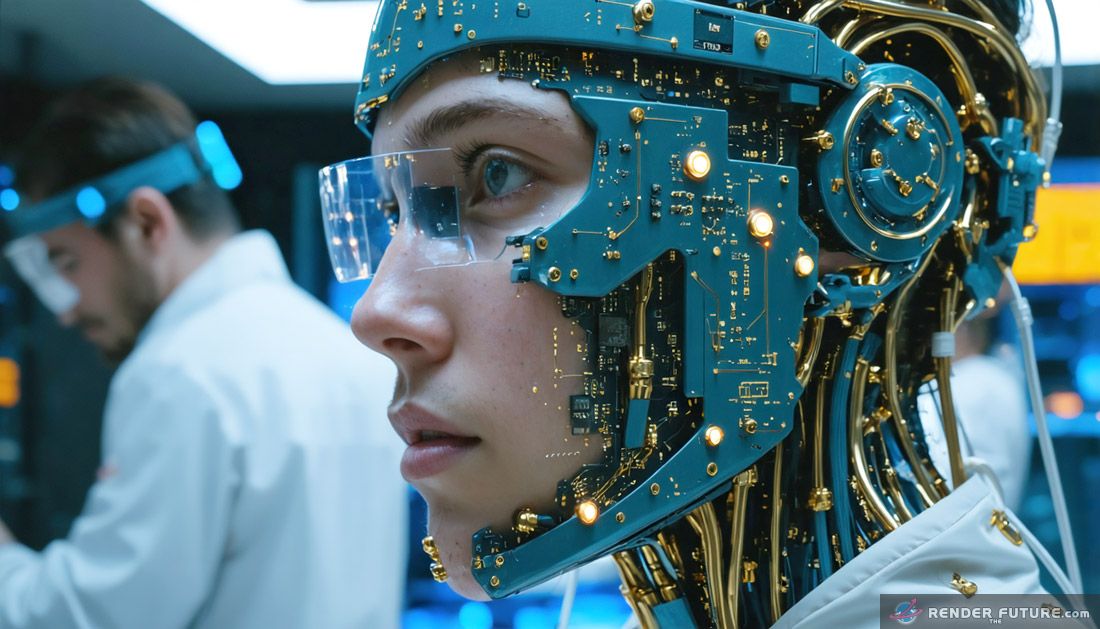 The psychological implications of neural gaming are profound. Studies at Johns Hopkins University reveal that after just 30 minutes of BCI gameplay, test subjects begin exhibiting “virtual embodiment syndrome” – a temporary blurring of physical and digital self-perception. This phenomenon raises critical questions about identity formation in young gamers and whether extended neural gameplay could lead to dissociative disorders. As these technologies approach consumer markets, neurologists are calling for mandatory “cognitive cool-down” periods similar to those required for pilots in flight simulators.
The psychological implications of neural gaming are profound. Studies at Johns Hopkins University reveal that after just 30 minutes of BCI gameplay, test subjects begin exhibiting “virtual embodiment syndrome” – a temporary blurring of physical and digital self-perception. This phenomenon raises critical questions about identity formation in young gamers and whether extended neural gameplay could lead to dissociative disorders. As these technologies approach consumer markets, neurologists are calling for mandatory “cognitive cool-down” periods similar to those required for pilots in flight simulators.
How It Works
- Motor Imagery Detection: Advanced machine learning algorithms decode your intentions — think about moving left, and your character responds instantly.
- Emotional Feedback Integration: Games will soon read your fear, excitement, or frustration through EEG sensors, adjusting gameplay dynamically.
- Direct Sensory Input: Experimental tech from MIT’s Media Lab can induce phantom smells and tastes via electrical stimulation of olfactory nerves.
Future vision of a Neural-Link Headband Technical Specs
Core Components:
- Multi-Array EEG Sensors: 256 dry-electrode neural contacts with gold-plated tips for low-impedance brainwave capture (10–100 μV range).
- Quantum Bio-Processor: Embedded neuromorphic chip (7nm node) for real-time neural decoding (sampling at 20kHz).
- Optogenetic Array: Micro-LED clusters (470nm/630nm wavelengths) for non-invasive cortical stimulation.
- Adaptive PCB Architecture: Flexible graphene circuits with self-healing traces, conforming to scalp topography.
- Holographic HUD: Retinal projection via waveguide lenses (1280x720px AR overlay).
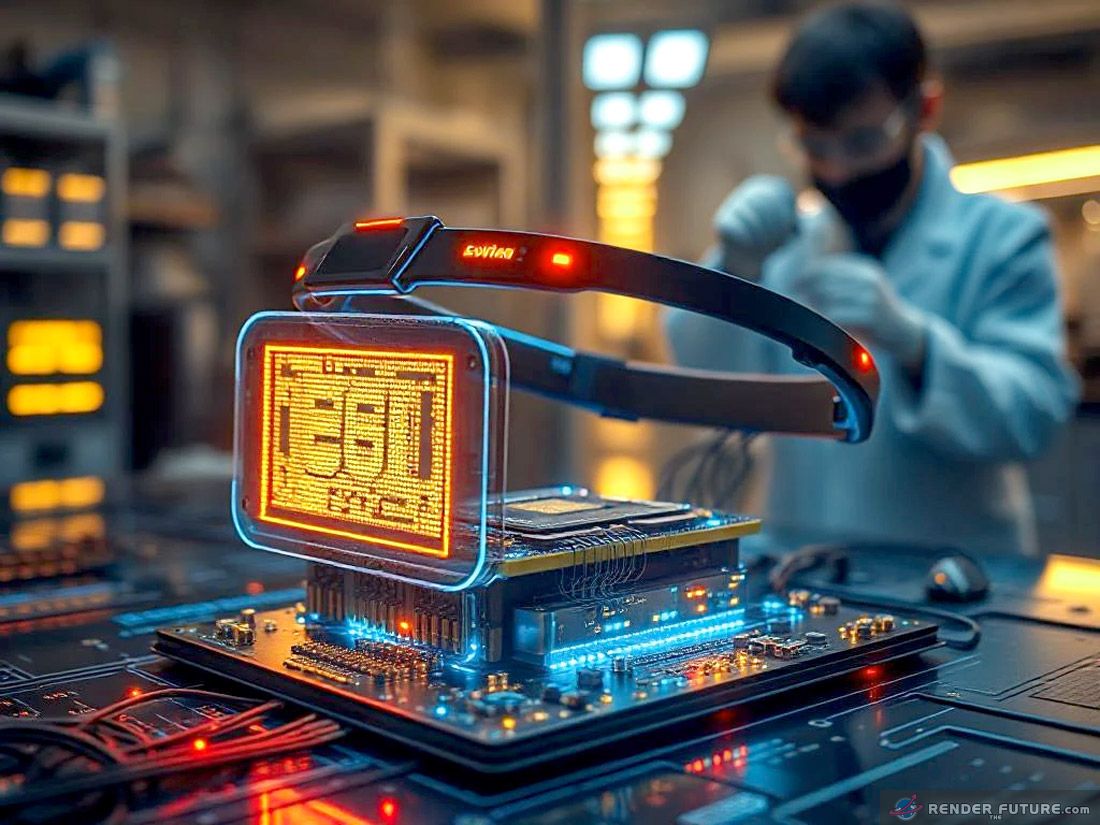 The military applications of this technology are advancing even faster than consumer versions. DARPA’s recent “Cortical Command” program has demonstrated soldiers controlling drone swarms with 95% accuracy using only neural interfaces. This dual-use nature of BCI tech means gaming innovations could rapidly cross over into defense systems, creating ethical dilemmas about the militarization of entertainment technology.
The military applications of this technology are advancing even faster than consumer versions. DARPA’s recent “Cortical Command” program has demonstrated soldiers controlling drone swarms with 95% accuracy using only neural interfaces. This dual-use nature of BCI tech means gaming innovations could rapidly cross over into defense systems, creating ethical dilemmas about the militarization of entertainment technology.
Full Sensory Suits: Touch, Temperature, and Pain
Today’s VR gloves and vests are just the beginning. The next wave of haptic technology will make digital experiences indistinguishable from physical ones — for better or worse.
The medical field is already adopting these technologies for therapeutic use. Burn victims at Boston General Hospital are using modified Teslasuits to gradually reintroduce tactile sensation through controlled virtual stimuli. However, this medical crossover presents a regulatory gray area – should haptic suits that can simulate severe pain be classified as medical devices when used therapeutically but as entertainment products when gaming?
Breakthroughs in Tactile Realism
- Teslasuit’s Full-Body Neurostimulation: Using electroactive polymers, it can simulate:
- The kickback of a shotgun (with adjustable intensity)
- The brush of fingertips against skin
- The searing heat of a virtual explosion (via rapid temperature spikes)
- bHaptics’ Tactal Vest: Already used by military contractors, it replicates bullet impacts with chilling precision — some testers report involuntary flinching reflexes.
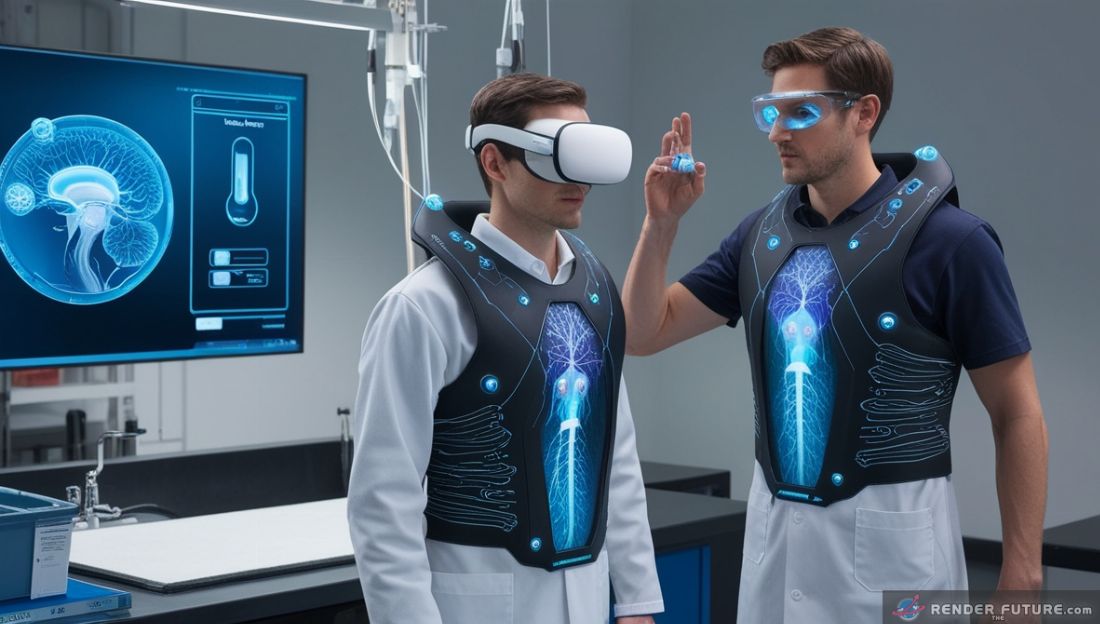 Professional athletes are incorporating haptic training into their regimens. The NBA’s Golden State Warriors recently revealed they’re using pressure-sensitive haptic floors to simulate game fatigue during practice. This sports crossover is creating a new category of “mixed-reality training” that blurs the line between physical and virtual conditioning.
Professional athletes are incorporating haptic training into their regimens. The NBA’s Golden State Warriors recently revealed they’re using pressure-sensitive haptic floors to simulate game fatigue during practice. This sports crossover is creating a new category of “mixed-reality training” that blurs the line between physical and virtual conditioning.
AI Guardians: Preventing Virtual Trauma
As immersion reaches physiologically dangerous levels, artificial intelligence will become the last line of defense between players and psychological harm.
The emerging field of “virtual psychiatry” is developing AI protocols to detect early signs of simulator sickness, dissociation, and PTSD-like symptoms in real-time. Researchers at Stanford’s Virtual Human Interaction Lab have created neural networks that can predict panic attacks 45 seconds before they occur by analyzing micro-changes in pupil dilation and skin conductance. These systems will likely become mandatory in high-intensity VR experiences, functioning like digital lifeguards for our nervous systems.
Real-Time Biometric Safeguards
- Neural Stress Monitors: AI tracks gamma waves associated with panic, automatically pausing gameplay if thresholds are exceeded.
- Adaptive Difficulty: Games that detect rising heart rate variability and soften horror elements for anxious players.
- Emergency “Neuro-Escape” Protocols: A voice command or blink pattern that instantly disengages all sensory inputs.
 Insurance companies are taking notice of these developments. Lloyds of London recently introduced “VR Overstimulation Coverage” for professional esports players, while some health providers are considering premium adjustments based on clients’ neural gameplay logs. This financial dimension adds another layer of complexity to the ethical debates surrounding immersive technology.
Insurance companies are taking notice of these developments. Lloyds of London recently introduced “VR Overstimulation Coverage” for professional esports players, while some health providers are considering premium adjustments based on clients’ neural gameplay logs. This financial dimension adds another layer of complexity to the ethical debates surrounding immersive technology.
When Virtuality Becomes a Reality
The Rise of Professional Gamers & Virtual Societies
Esports is already a billion-dollar industry, but soon, pro gamers will be as celebrated as NBA stars. Virtual stadiums will host millions of spectators in real-time, with players commanding salaries in the tens of millions.
The 2023 League of Legends World Championship drew over 5 million concurrent viewers — a number that will pale in comparison to the fully immersive VR tournaments of 2030, where audiences will be able to walk alongside their favorite players as holographic avatars. Sponsorships are evolving too, with brands like Red Bull constructing virtual training facilities where athletes’ neural data is analyzed to optimize performance — blurring the line between esports and traditional athletics.
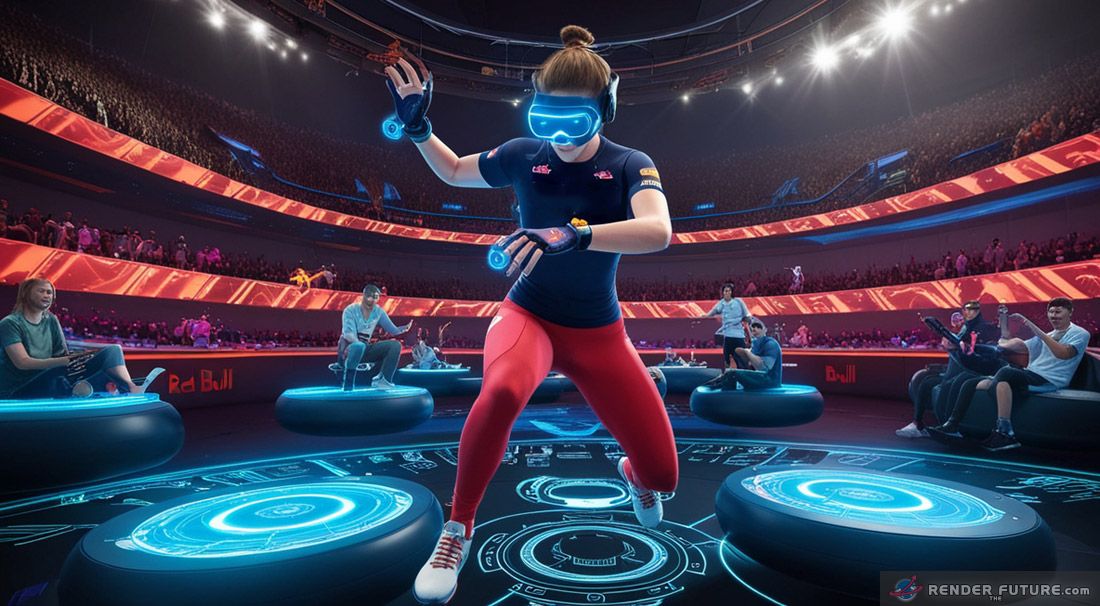 Beyond competition, virtual worlds will become social hubs.
Beyond competition, virtual worlds will become social hubs.
Why attend a real wedding when you can have one in a floating castle above a digital ocean? Corporate meetings, concerts, even political rallies — all will migrate into immersive spaces where the only limit is imagination.
Platforms like Meta’s Horizon Worlds are already experimenting with persistent virtual economies, where users can purchase AI-generated artwork or rent digital real estate with cryptocurrency. Some sociologists warn this could lead to a “digital gentrification,” where wealth disparities in virtual spaces mirror — or even exceed — those in the physical world. Meanwhile, religious groups are exploring VR baptisms and meditation temples, raising philosophical questions about the sanctity of rituals performed in synthetic environments.
The Dark Side: Addiction, Hackers, and Digital Terrorism
With great immersion comes great risk. Dopamine overload could lead to mass addiction, while hackers might hijack neural interfaces, trapping users in nightmare simulations. Cyber-terrorists could weaponize VR, inducing panic or even physical harm through sensory manipulation.
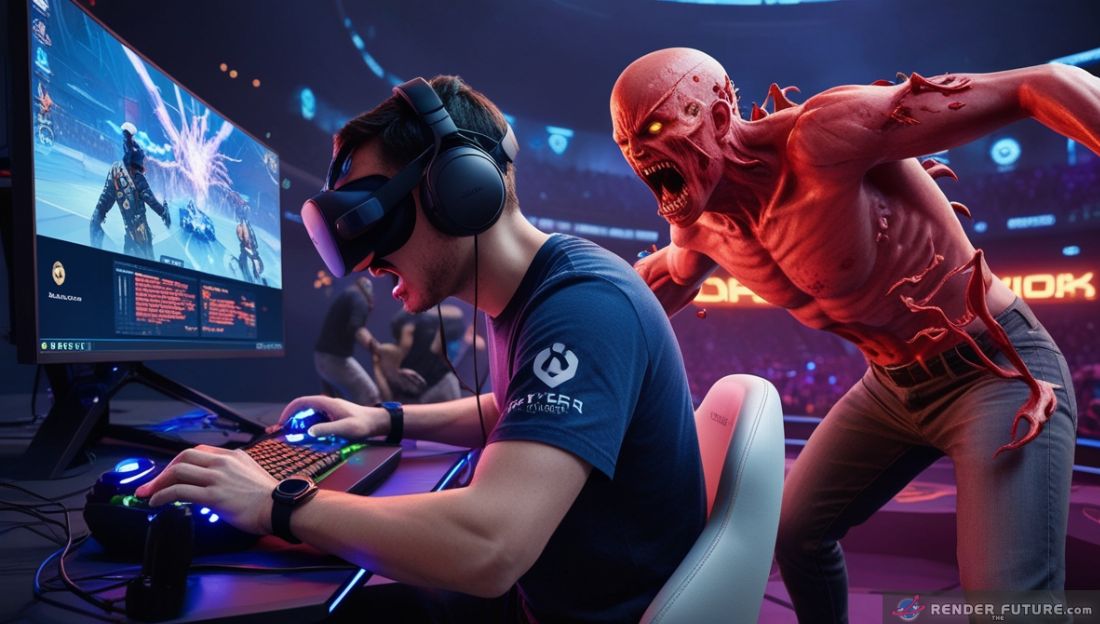 A 2024 white-hat hacking demonstration showed how a compromised neural headset could trigger false pain signals — revealing how malicious actors might exploit these systems for ransom or psychological torture. The Pentagon has already flagged VR as a potential national security threat, with defense contractors developing “neuro-firewalls” to block unauthorized access to users’ sensory inputs.
A 2024 white-hat hacking demonstration showed how a compromised neural headset could trigger false pain signals — revealing how malicious actors might exploit these systems for ransom or psychological torture. The Pentagon has already flagged VR as a potential national security threat, with defense contractors developing “neuro-firewalls” to block unauthorized access to users’ sensory inputs.
Regulation will be critical
Governments may enforce “VR safety protocols“, requiring AI guardians to prevent psychological trauma. Ethical debates will rage — how much virtual suffering is too much? South Korea recently mandated “bio-breaks” for VR sessions exceeding two hours, while the EU is debating whether extreme horror simulations should carry age restrictions like tobacco or alcohol.
Meanwhile, therapists report a surge in patients suffering from “virtual dissociation” — a condition where users struggle to reorient to physical reality after extended immersion. Some rehab centers are now offering “digital detox” programs, where patients undergo withdrawal from VR in sensory-deprivation chambers. The question remains: Will we control these technologies, or will they reshape human behavior in ways we can’t yet predict?
Quantum Leaps & The Matrix Scenario
Quantum Computing & Living Game Worlds
 Quantum processors will enable games that evolve in real-time. NPCs (non-player characters) will develop memories, ecosystems will self-balance, and every player’s choice will ripple across persistent universes.
Quantum processors will enable games that evolve in real-time. NPCs (non-player characters) will develop memories, ecosystems will self-balance, and every player’s choice will ripple across persistent universes.
Imagine an RPG where NPCs not only remember your past actions but hold generational grudges — where a village you burned in 2030 remains a smoldering ruin when your grandchildren play in 2045.
NVIDIA’s quantum division recently demonstrated a prototype where 10,000 AI agents developed unique dialects and trade networks without developer input — a glimpse at games that will grow more complex the longer they exist. This goes beyond procedural generation; we’re talking about digital Darwinism, where in-game species mutate based on player behavior, and abandoned cities decay under simulated weather erosion.
The military is already funding research into quantum-simulated war games that predict geopolitical outcomes — raising eerie questions about whether future conflicts might be waged and resolved in synthetic worlds first. Meanwhile, philosophers warn these “living games” could birth unintended consciousness — what rights would a self-aware NPC deserve after a decade of simulated existence?
Will we reach a Matrix-like reality?
Maybe not yet — but the line between “game” and “life” will vanish. Some may prefer virtual existence over the real world, leading to societal shifts we can’t yet predict.
The Major Players: Who Will Dominate the Future?
- Meta (Facebook) – Betting big on the Metaverse with VR social platforms.
- Sony & Microsoft – Pushing next-gen consoles with neural tech integrations.
- NVIDIA & AMD – Racing to develop ultra-fast AI-driven graphics.
- Valve & Epic Games – Innovating in real-time game engines and VR ecosystems.
- Neuralink & Other Brain-Interface Startups – Pioneering direct neural control.
A New Reality Awaits
The future of gaming is both exhilarating and terrifying. We stand at the brink of a revolution where play, work, and life itself may soon be indistinguishable from simulation. The key? Balance. As we dive deeper into digital realms, we must ensure that the real world — with all its imperfections — remains worth living in.
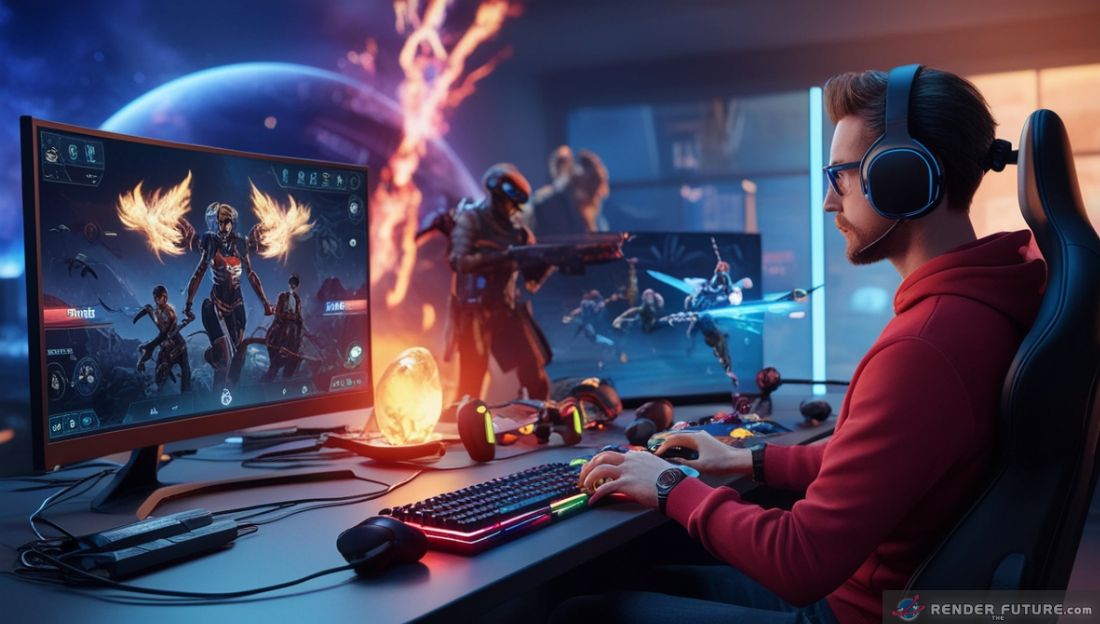 Already, we’re seeing the first signs of this shift in unexpected places. In Japan, “VR cafés” offer hourly rentals of full-body haptic suits, where salarymen escape to fish in tranquil digital lakes during lunch breaks. Swedish schools are piloting history lessons inside painstakingly recreated Viking settlements, with students reporting 40% better retention compared to textbooks. Even palliative care hospitals are experimenting with “comfort VR” — allowing terminal patients to revisit childhood homes or walk through favorite forests one last time.
Already, we’re seeing the first signs of this shift in unexpected places. In Japan, “VR cafés” offer hourly rentals of full-body haptic suits, where salarymen escape to fish in tranquil digital lakes during lunch breaks. Swedish schools are piloting history lessons inside painstakingly recreated Viking settlements, with students reporting 40% better retention compared to textbooks. Even palliative care hospitals are experimenting with “comfort VR” — allowing terminal patients to revisit childhood homes or walk through favorite forests one last time.
These applications reveal gaming’s emerging role not just as entertainment, but as psychological scaffolding for human experience. As the technology becomes more lifelike, we’ll face a fundamental question: When reality can be endlessly customized, what happens to our collective tolerance for life’s unscripted messiness?
The game is changing…
Are you ready to play?

References and Sources
- Newzoo Global Games Market Report – A leading authority on gaming industry analytics. https://newzoo.com
- IEEE Spectrum: The Future of VR & Neural Interfaces – Cutting-edge research on immersive tech. https://spectrum.ieee.org
- Wired: Quantum Computing in Gaming – How quantum tech will revolutionize game design. https://www.wired.com
- The Verge: The Ethics of Virtual Reality – Debates on the psychological impact of VR. https://www.theverge.com
- MIT Technology Review: AI in Game Development – How artificial intelligence is shaping future games. https://www.technologyreview.com










